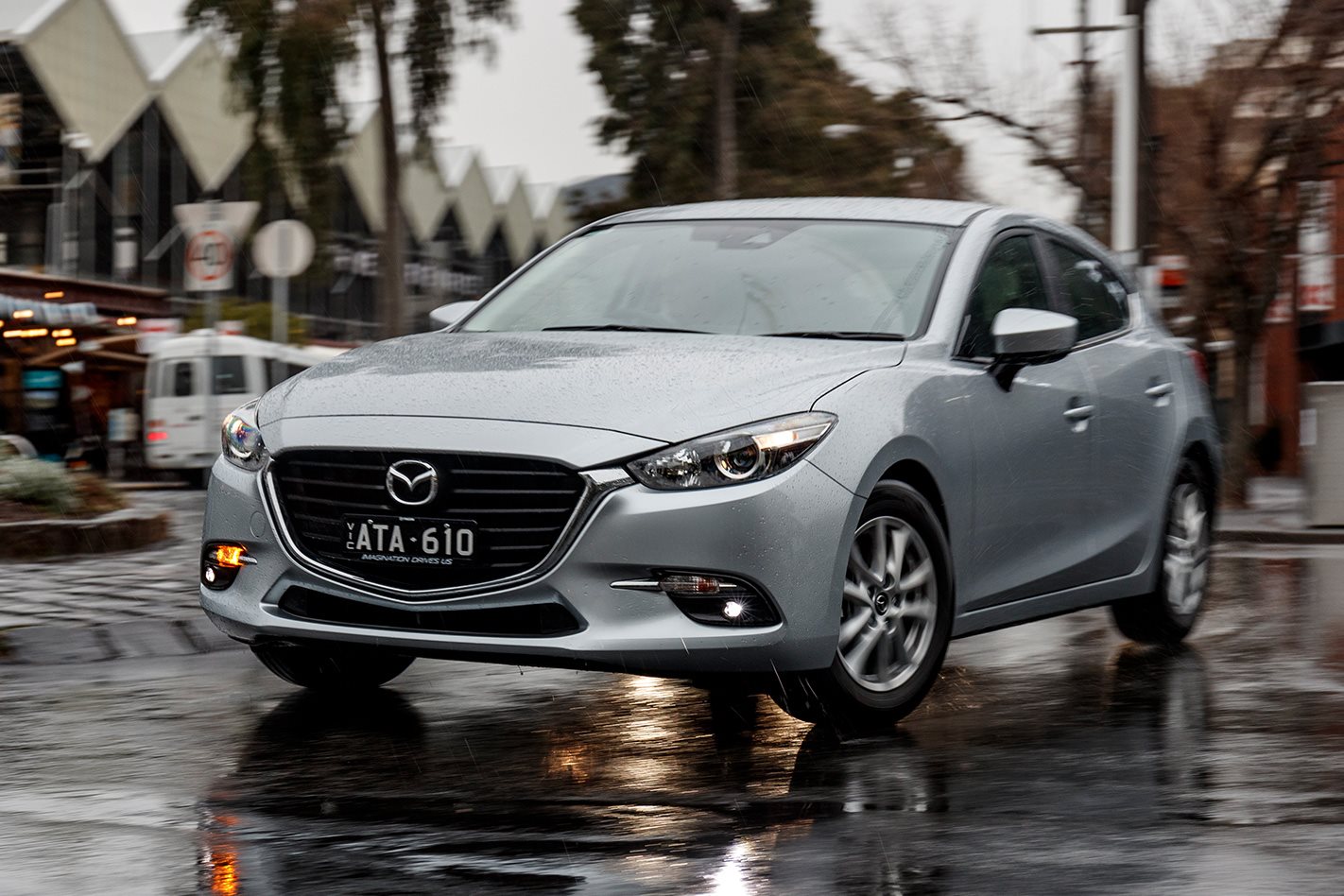
First introduced in 2013 the current model Mazda 3 is one of the older small cars on the market, but a series of below-the-skin upgrades have helped it cement second place on the passenger car sales ladder behind the Toyota Corolla.
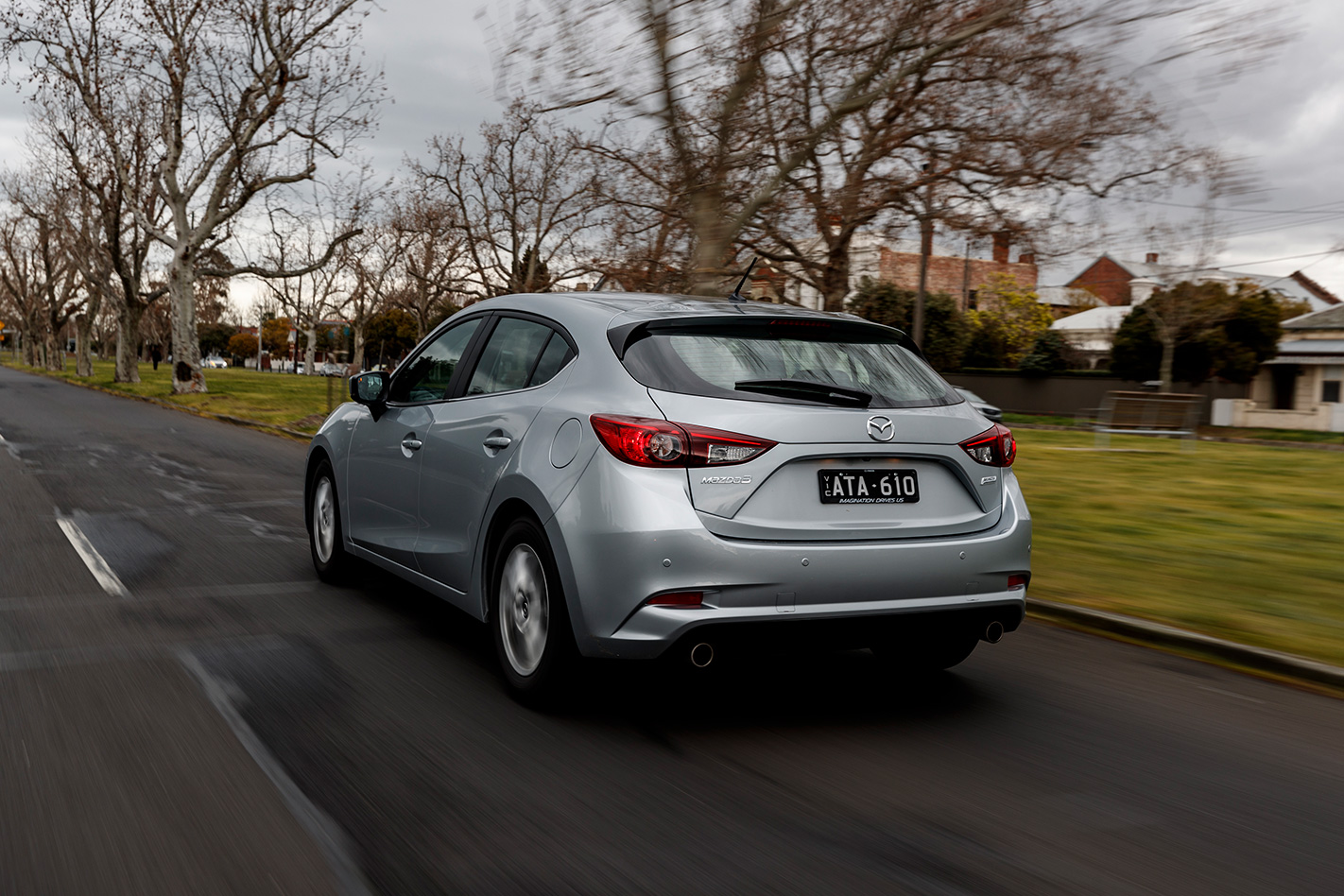
Available as a hatchback or sedan, the Mazda 3 is easy on fuel, well-appointed and fun to drive. It comes with two engine options – 2.0-litre and 2.5-litre petrols – with the smaller fitted to the lower-priced half of the range while the 2.5 pulls the three SP25 variants.
With the next-generation Mazda 3 on the horizon we decided to revisit the current model in mid-spec Touring hatchback automatic guise to see how it stands up to fresher opposition such as the all-new Corolla and Hyundai i30.
VALUE
The Mazda 3 Touring is the plushest of the 2.0-litre versions, with retail pricing starting at $25,490 for the six-speed manual, with the six-speed auto attracting a $2000 premium. The sedan and hatch versions cost the same.
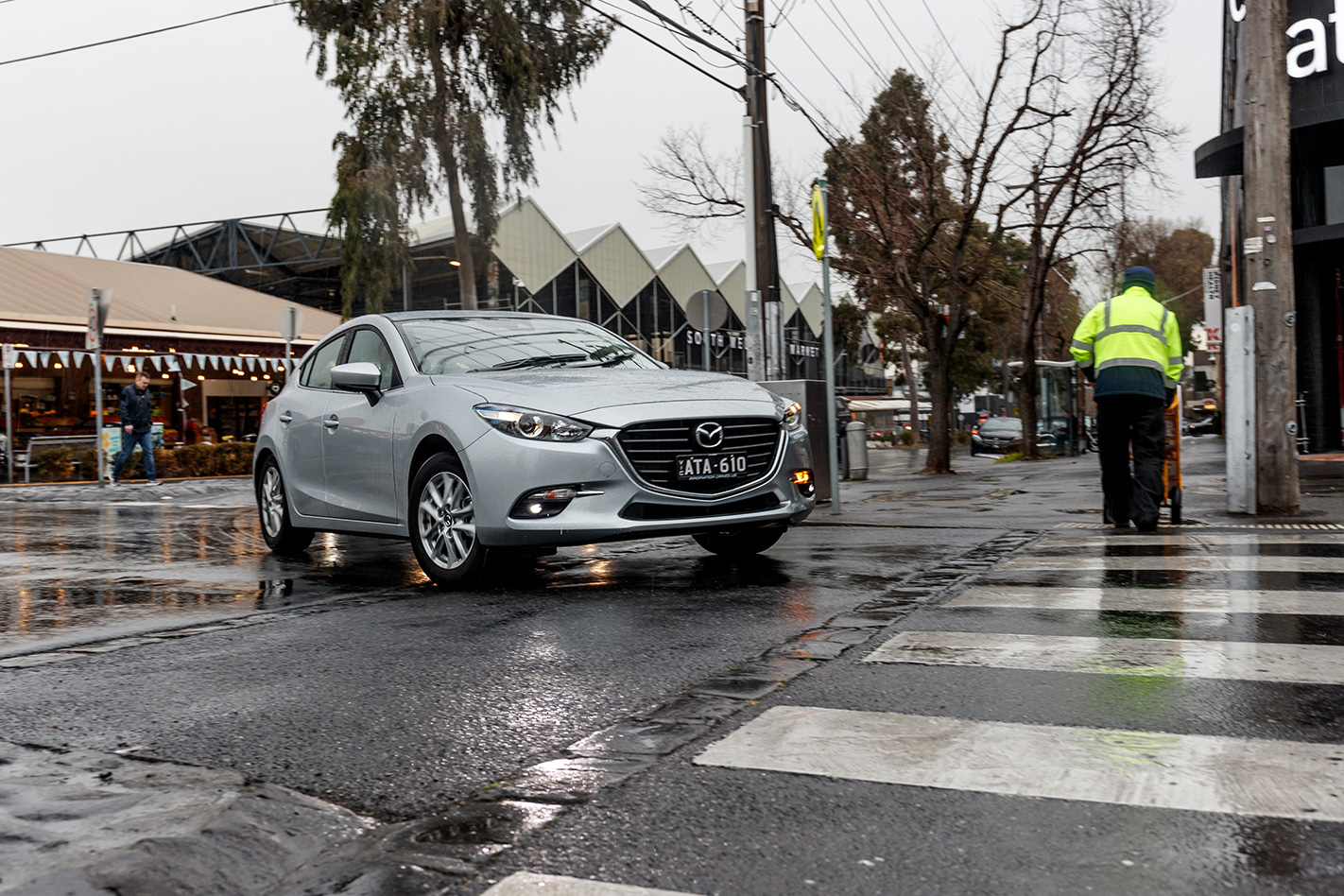
The Touring costs just $4000 more than the entry-level Neo Sport and $10,000 less than the range-topping SP25 Astina.
The 2.0-litre engine is reasonably frugal, with an official combined fuel consumption figure of 5.8L/100kms when coupled to the optional six-speed auto. Our real-world driving saw that figure rise to 8.5L/100km, though this involved quite a lot of city driving, mostly in Sport driving mode.
The Mazda 3 Touring requires servicing every 10,000kms or 12 months, whichever comes first, which is relatively frequent. Mazda charges $303 for the first and third service appointments and $331 for the second and fourth.
STANDARD FEATURES
The Touring adds a few creature comforts over the Maxx Sport including leather upholstery, automatic folding mirrors and advanced keyless entry that lets you open the door and start the engine without having to take the key fob out of your bag or pocket.
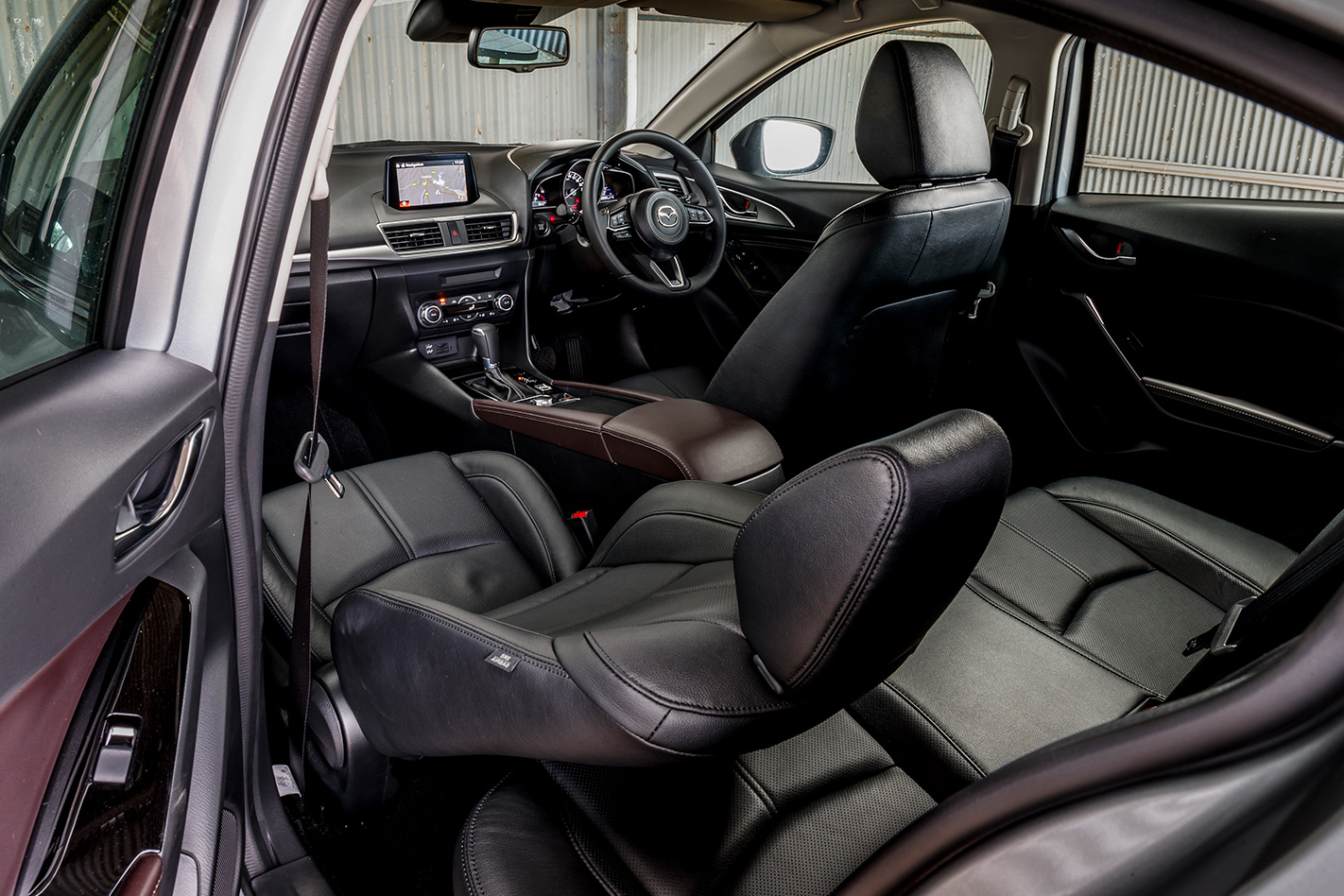
That’s on top of a healthy equipment list that includes a 7.0-inch colour screen, AM/FM/Digital (DAB+) radio, and autonomous emergency braking that also works in reverse to help prevent parking bingles.
Other features include rear-parking sensors, cruise control, blind-spot monitoring, rear-cross traffic alert, dual-zone climate control, dusk-sensing headlights, LED fog-lamps, rain-sensing windscreen wipers, an electric park brake and 16-inch alloy wheels.
SIZE
The Mazda 3 Touring we tested is a five-door hatchback that seats up to five people. A four-door sedan with five-person capacity is also available..
Measuring 4.47m long by 1.79m wide, and weighing in at 1308kg, the Mazda 3 Touring hatch auto isn’t the smallest car in its class, however boot space is tight with a 308-litre capacity that measures less than smaller cars such as the Kia Rio and Hyundai Accent. The Mazda 3 sedan’s boot holds a more sizable 408 litres.

SAFETY
The Mazda 3 received a five-star ANCAP safety rating in August 2016 thanks in part to its active safety features, including range-wide autonomous emergency braking (AEB). It scored well for crash protection, including 16 out of 16 for side impact. It has six airbags, and child-seat anchor points including two ISOFIX brackets for each outboard rear seat, and three top tethers.
The Touring brings additional active safety over and above the standard kit, including blind-spot monitoring and rear-cross traffic alert that warns you of any cars approaching from the side while you reverse.
COMFORT
The Mazda 3’s interior is showing its age, but still has an air of sophistication with soft-touch surfaces aplenty, clean design, a leather-clad steering wheel and intelligently-placed switches and gauges. The seats, trimmed with a mix of real and faux leather, offer good comfort. The driver’s seat has height and lumbar adjustment to help you settle into a good driving position.

The MZD infotainment system is easy to operate via a dial on the centre console. It lacks the added convenience of Apple CarPlay and Android Auto smartphone mirroring, however an upcoming update will allow that tech to be retrofitted next year.
The Mazda 3 loses marks in the back row, with its ascending window line obscuring side vision for younger occupants. Legroom is a little tight as well, with even average-sized adults finding their shins touching the front seats.
Second-row passengers also miss out on conveniences such as face-level air vents, and there are no USB or 12v charging sockets to keep devices charged up. It might be a niggling complaint, but those features are fast becoming common in newer cars in the segment. There are at least bottle holders in the doors and the fold-down centre armrest has two cup holders, though there’s only one map pocket on the passenger side.
Road noise is also high despite Mazda attempting to improve sound suppression in a 2016 update, but the ride is comfortable even on rougher roads thanks to a settled ride that recovers quickly from big hits.
ON THE ROAD
The 2.0-litre engine is a city slicker but has enough power for easy trips down the highway, with the six-speed automatic transmission working smoothly with throttle inputs.
It is, however, a little lethargic from a standing start and doesn’t really wake up until the tachometer hits about 4000rpm. A Sport drive mode introduced in 2016 makes the engine rev higher before shifting up to the next gear, though frequent use of that feature will see your fuel consumption head north.

The Mazda 3 is an enjoyable car to drive, with light but engaging steering that makes easy work of negotiating suburban streets and bendy country roads. Despite its age it remains one of the segment’s best when it comes to handling.
The ride feels soft but delivers enough body control for sharp cornering. This is helped by something that Mazda calls G-Vectoring Control, which subtly trims power when cornering to transfer load onto the front tyres and help them produce more cornering grip. Result: the car feels more planted while changing direction more fluidly, but you’ll barely notice that the electronics are giving you a helping hand.
THE VERDICT
The Mazda 3’s styling and powertrains are beginning to show their age, but Mazda has continued to tweak its driving dynamics and add active safety, which should ensure its popularity until the next-generation model debuts – which is likely to happen next year.
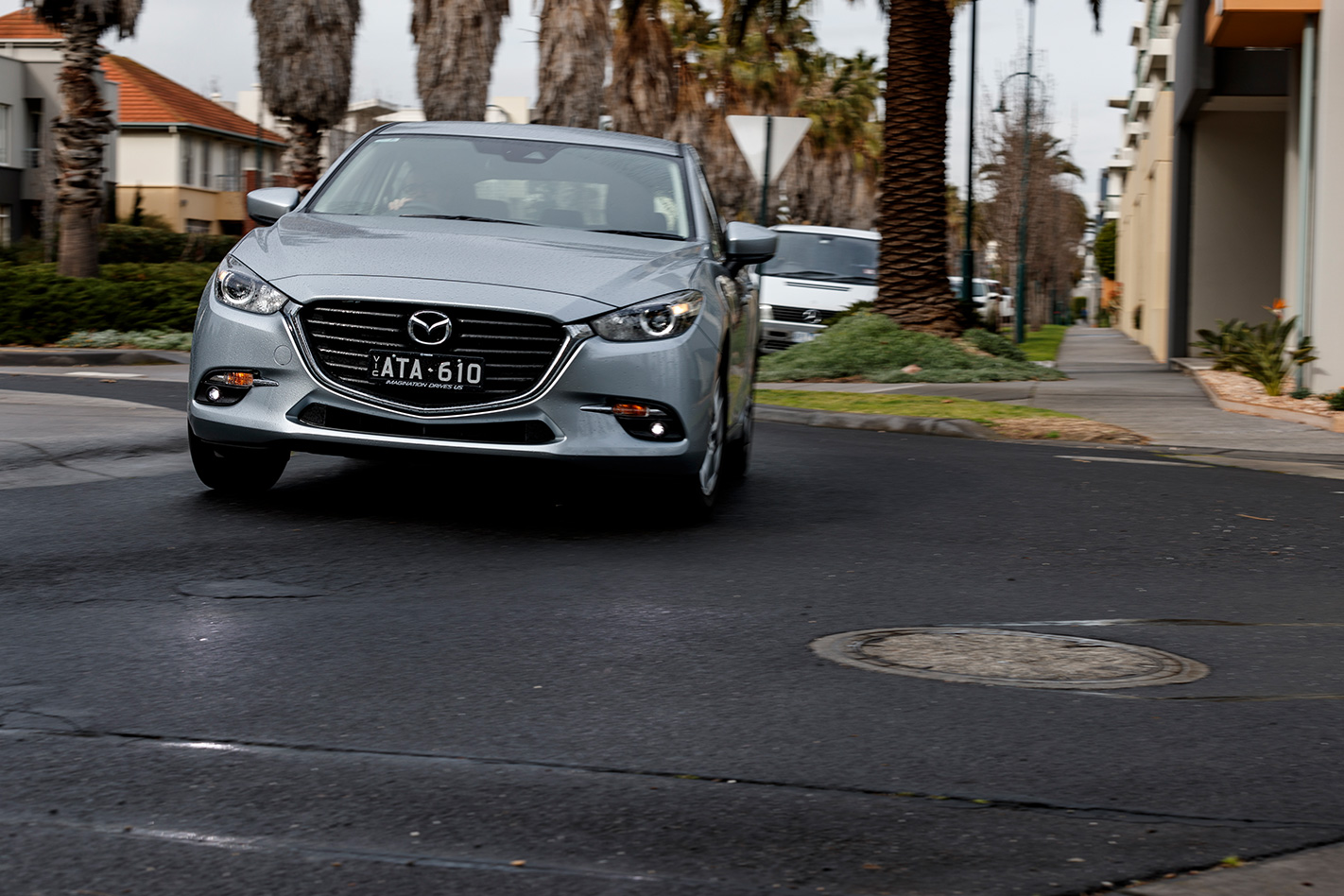
While we reckon the Maxx Sport variant hits a sweeter spot in terms of pricing and features, the extra $2000 for the Touring is a fair price to pay for anyone seeking a little more sophistication.




